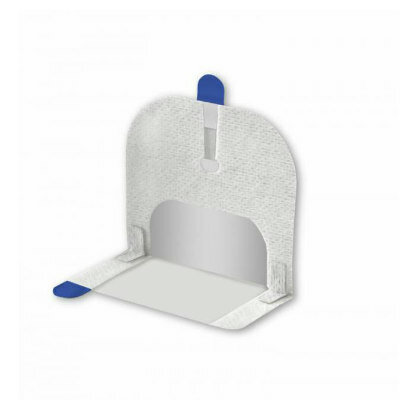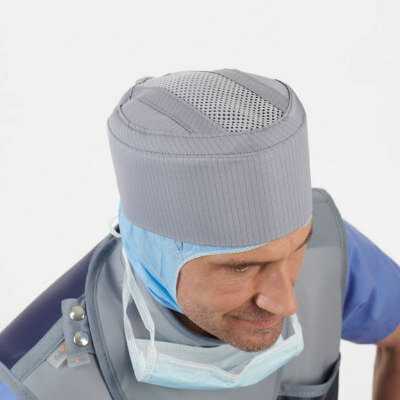AI Tool Combined with Radiologists Identifies Breast Cancer with 90% Accuracy
|
By MedImaging International staff writers Posted on 04 Nov 2019 |

Image: An AI tool-radiologist combo can identify breast cancer with approximately 90% accuracy (Photo courtesy of MDN).
An artificial intelligence (AI) tool trained by researchers on approximately one million screening mammography images has identified breast cancer with approximately 90% accuracy when combined with analysis by radiologists in a new study. Researchers from the NYU School of Medicine (New York City, NY, USA) and the NYU Center for Data Science examined the ability of a type of AI to add value to the diagnoses reached by a group of 14 radiologists as they reviewed 720 mammogram images.
The researchers designed statistical techniques that let their program “learn” how to get better at a task without being told exactly how. They trained the AI tool on several images matched with the results of biopsies performed in the past with the aim of enabling it to help radiologists reduce the number biopsies needed. For training the AI tool, the researchers used an extraordinarily large dataset consisting of 229,426 digital screening mammography exams and 1,001,093 images. The neural network was trained by programming it to analyze images from the database for which cancer diagnoses had already been determined.
Additionally, the researchers designed the study AI model to first consider very small patches of the full resolution image separately in order to create a heat map, a statistical picture of the disease likelihood. Then the program was taught to consider the entire breast for structural features linked to cancer, paying closer attention to the areas flagged in the pixel-level heat map. Instead of the researchers identifying the image features for their AI to search for, the tool is discovering which image features increase prediction accuracy all by itself. Going forward, the team plans to further increase the tool’s accuracy by training the AI program on more data, even identify changes in breast tissue that are not yet cancerous but have the potential to be.
“Our study found that AI identified cancer-related patterns in the data that radiologists could not, and vice versa,” said senior study author Krzysztof Geras, assistant professor in the Department of Radiology at NYU Langone. “AI detected pixel-level changes in tissue invisible to the human eye, while humans used forms of reasoning not available to AI. The ultimate goal of our work is to augment, not replace, human radiologists.”
“The transition to AI support in diagnostic radiology should proceed like the adoption of self-driving cars—slowly and carefully, building trust, and improving systems along the way with a focus on safety,” said first author Nan Wu, a doctoral candidate at the NYU Center for Data Science.
Related Links:
NYU School of Medicine
The researchers designed statistical techniques that let their program “learn” how to get better at a task without being told exactly how. They trained the AI tool on several images matched with the results of biopsies performed in the past with the aim of enabling it to help radiologists reduce the number biopsies needed. For training the AI tool, the researchers used an extraordinarily large dataset consisting of 229,426 digital screening mammography exams and 1,001,093 images. The neural network was trained by programming it to analyze images from the database for which cancer diagnoses had already been determined.
Additionally, the researchers designed the study AI model to first consider very small patches of the full resolution image separately in order to create a heat map, a statistical picture of the disease likelihood. Then the program was taught to consider the entire breast for structural features linked to cancer, paying closer attention to the areas flagged in the pixel-level heat map. Instead of the researchers identifying the image features for their AI to search for, the tool is discovering which image features increase prediction accuracy all by itself. Going forward, the team plans to further increase the tool’s accuracy by training the AI program on more data, even identify changes in breast tissue that are not yet cancerous but have the potential to be.
“Our study found that AI identified cancer-related patterns in the data that radiologists could not, and vice versa,” said senior study author Krzysztof Geras, assistant professor in the Department of Radiology at NYU Langone. “AI detected pixel-level changes in tissue invisible to the human eye, while humans used forms of reasoning not available to AI. The ultimate goal of our work is to augment, not replace, human radiologists.”
“The transition to AI support in diagnostic radiology should proceed like the adoption of self-driving cars—slowly and carefully, building trust, and improving systems along the way with a focus on safety,” said first author Nan Wu, a doctoral candidate at the NYU Center for Data Science.
Related Links:
NYU School of Medicine
Latest Industry News News
- Bayer and Google Partner on New AI Product for Radiologists
- Samsung and Bracco Enter Into New Diagnostic Ultrasound Technology Agreement
- IBA Acquires Radcal to Expand Medical Imaging Quality Assurance Offering
- International Societies Suggest Key Considerations for AI Radiology Tools
- Samsung's X-Ray Devices to Be Powered by Lunit AI Solutions for Advanced Chest Screening
- Canon Medical and Olympus Collaborate on Endoscopic Ultrasound Systems
- GE HealthCare Acquires AI Imaging Analysis Company MIM Software
- First Ever International Criteria Lays Foundation for Improved Diagnostic Imaging of Brain Tumors
- RSNA Unveils 10 Most Cited Radiology Studies of 2023
- RSNA 2023 Technical Exhibits to Offer Innovations in AI, 3D Printing and More
- AI Medical Imaging Products to Increase Five-Fold by 2035, Finds Study
- RSNA 2023 Technical Exhibits to Highlight Latest Medical Imaging Innovations
- AI-Powered Technologies to Aid Interpretation of X-Ray and MRI Images for Improved Disease Diagnosis
- Hologic and Bayer Partner to Improve Mammography Imaging
- Global Fixed and Mobile C-Arms Market Driven by Increasing Surgical Procedures
- Global Contrast Enhanced Ultrasound Market Driven by Demand for Early Detection of Chronic Diseases
Channels
Radiography
view channel
Novel Breast Imaging System Proves As Effective As Mammography
Breast cancer remains the most frequently diagnosed cancer among women. It is projected that one in eight women will be diagnosed with breast cancer during her lifetime, and one in 42 women who turn 50... Read more
AI Assistance Improves Breast-Cancer Screening by Reducing False Positives
Radiologists typically detect one case of cancer for every 200 mammograms reviewed. However, these evaluations often result in false positives, leading to unnecessary patient recalls for additional testing,... Read moreMRI
view channel
PET/MRI Improves Diagnostic Accuracy for Prostate Cancer Patients
The Prostate Imaging Reporting and Data System (PI-RADS) is a five-point scale to assess potential prostate cancer in MR images. PI-RADS category 3 which offers an unclear suggestion of clinically significant... Read more
Next Generation MR-Guided Focused Ultrasound Ushers In Future of Incisionless Neurosurgery
Essential tremor, often called familial, idiopathic, or benign tremor, leads to uncontrollable shaking that significantly affects a person’s life. When traditional medications do not alleviate symptoms,... Read more
Two-Part MRI Scan Detects Prostate Cancer More Quickly without Compromising Diagnostic Quality
Prostate cancer ranks as the most prevalent cancer among men. Over the last decade, the introduction of MRI scans has significantly transformed the diagnosis process, marking the most substantial advancement... Read moreUltrasound
view channel
Deep Learning Advances Super-Resolution Ultrasound Imaging
Ultrasound localization microscopy (ULM) is an advanced imaging technique that offers high-resolution visualization of microvascular structures. It employs microbubbles, FDA-approved contrast agents, injected... Read more
Novel Ultrasound-Launched Targeted Nanoparticle Eliminates Biofilm and Bacterial Infection
Biofilms, formed by bacteria aggregating into dense communities for protection against harsh environmental conditions, are a significant contributor to various infectious diseases. Biofilms frequently... Read moreNuclear Medicine
view channel
New SPECT/CT Technique Could Change Imaging Practices and Increase Patient Access
The development of lead-212 (212Pb)-PSMA–based targeted alpha therapy (TAT) is garnering significant interest in treating patients with metastatic castration-resistant prostate cancer. The imaging of 212Pb,... Read moreNew Radiotheranostic System Detects and Treats Ovarian Cancer Noninvasively
Ovarian cancer is the most lethal gynecological cancer, with less than a 30% five-year survival rate for those diagnosed in late stages. Despite surgery and platinum-based chemotherapy being the standard... Read more
AI System Automatically and Reliably Detects Cardiac Amyloidosis Using Scintigraphy Imaging
Cardiac amyloidosis, a condition characterized by the buildup of abnormal protein deposits (amyloids) in the heart muscle, severely affects heart function and can lead to heart failure or death without... Read moreGeneral/Advanced Imaging
view channel
New AI Method Captures Uncertainty in Medical Images
In the field of biomedicine, segmentation is the process of annotating pixels from an important structure in medical images, such as organs or cells. Artificial Intelligence (AI) models are utilized to... Read more.jpg)
CT Coronary Angiography Reduces Need for Invasive Tests to Diagnose Coronary Artery Disease
Coronary artery disease (CAD), one of the leading causes of death worldwide, involves the narrowing of coronary arteries due to atherosclerosis, resulting in insufficient blood flow to the heart muscle.... Read more
Novel Blood Test Could Reduce Need for PET Imaging of Patients with Alzheimer’s
Alzheimer's disease (AD), a condition marked by cognitive decline and the presence of beta-amyloid (Aβ) plaques and neurofibrillary tangles in the brain, poses diagnostic challenges. Amyloid positron emission... Read more.jpg)
CT-Based Deep Learning Algorithm Accurately Differentiates Benign From Malignant Vertebral Fractures
The rise in the aging population is expected to result in a corresponding increase in the prevalence of vertebral fractures which can cause back pain or neurologic compromise, leading to impaired function... Read moreImaging IT
view channel
New Google Cloud Medical Imaging Suite Makes Imaging Healthcare Data More Accessible
Medical imaging is a critical tool used to diagnose patients, and there are billions of medical images scanned globally each year. Imaging data accounts for about 90% of all healthcare data1 and, until... Read more


















